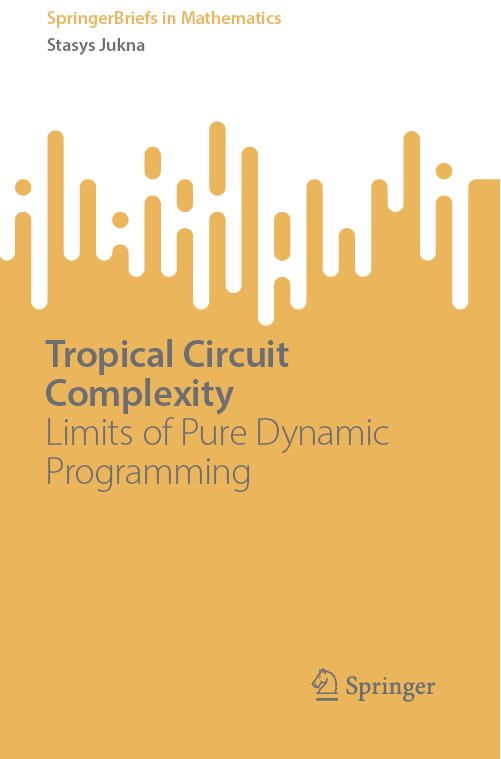
Springer Nature, 2023, X+119 pages, 19 b/w illustrations
Books page at Springer
Book series:
SpringerBriefs
| Frontmatter [PDF] | List of Errata |
| Supplementary material | |
This book presents an enticing introduction to tropical circuits and their use as a rigorous mathematical model for dynamic programming (DP), which is one of the most fundamental algorithmic paradigms for solving combinatorial, discrete optimization problems.
In DP, an optimization problem is broken up into smaller subproblems that are solved recursively(1). Many classical DP algorithms are pure in that they only use the basic (min,+) or (max,+) operations in their recursion equations. In tropical circuits, these operations are used as gates. Thanks to the rigorous combinatorial nature of tropical circuits, elements from the Boolean and arithmetic circuit complexity can be used to obtain lower bounds for tropical circuits, which play a crucial role in understanding the limitations and capabilities of these computational models. This book aims to offer a toolbox for proving lower bounds on the size of tropical circuits.
In this work, the reader will find lower-bound ideas and methods that have emerged in the last few years, with detailed proofs. Largely self-contained, this book is meant to be approachable by graduate students in mathematics and computer science with a special interest in circuit complexity.